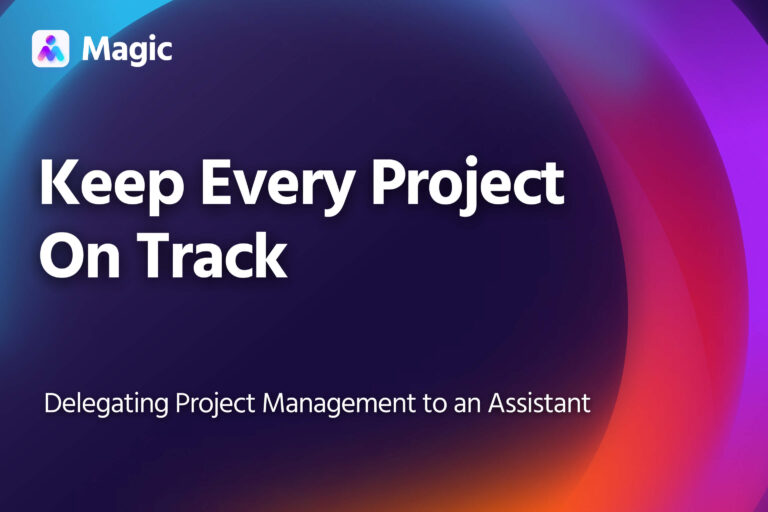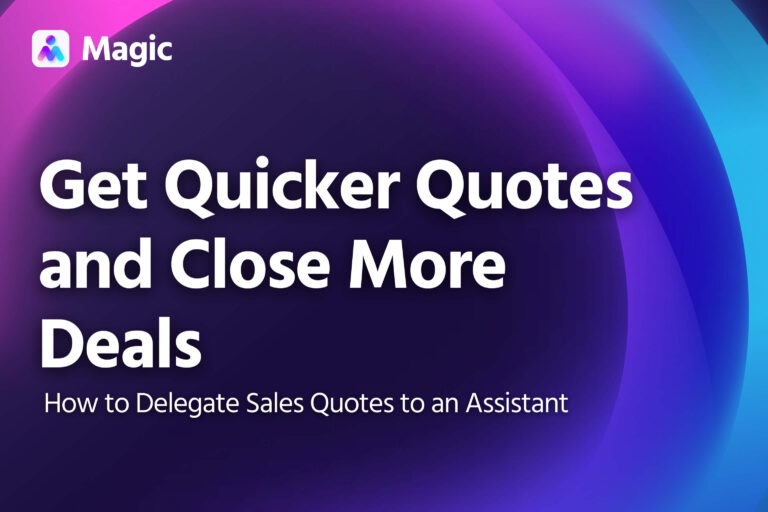Over the past few years, virtual assistants have featured more prominently in how businesses operate. Data suggests well over half of US-based businesses employ at least one, and that the vast majority of them find virtual assistant outsourcing has boosted their productivity and reduced costs.
This is also part of a broader shift surrounding work. As workers’ priorities have changed, managing remote staff has become crucial for finding and retaining talent. And with the ever-broadening range of virtual assistant niches, VAs will be instrumental vital additions to any business.
A big part of achieving success in hiring a virtual assistant and working with them is setting proper expectations. This includes who does what, how it should be done, and how results will be measured.
Setting expectations will let you work more productively with VAs. It will also ensure that the talented workers you find will be willing and eager to keep working with your business.
- Virtual assistants are effective at helping businesses improve productivity, reduce costs, and shorten time-to-market. Because of the broad range of virtual assistant services, they’re a valuable option in overcoming contemporary challenges in recruitment.
- Setting clear expectations of your VAs’ work—and also of the projects you put them to work on—can help you make better decisions about how to invest in, or change your approach to recruitment and outsourcing.
- Clear expectations can also improve VAs’ productivity and satisfaction, helping you retain talent in the long run.
- When bringing in a virtual assistant, be sure to set expectations regarding tasks, communication and management, objectives, and how they’ll be evaluated. All of these lead to much smoother, more productive collaboration.
- Remote assistants require a proper onboarding process and adjustment phase, just as any worker would. You should also have documents they can refer to anytime they need to refresh themselves on the expectations you set at the onset.
The Value of Setting Expectations for Virtual Assistant Services
You wouldn’t hire someone without identifying a job description, or subscribe to a service without first seeing if it meets your needs. Similarly, when hiring virtual assistants, you need to figure out what you’re hoping to get from working with them.
The clearer you are about expectations—with your independent workers and with yourself—the better you can assess the fruits of virtual assistant services. This gives you valuable information for deciding how to invest in it further or change your approach to it.
Further down the line, your expectations will also affect your assistants’ decision of whether or not they want to continue working with you. Just as businesses have broader options to find a virtual assistant, independent workers also have more freedom in choosing remote employers.
To retain high-value remote assistants, you’ll need to match their need for flexibility and engagement with relevant work.
Starting the Search
Some expectations need to be set even before you talk to your first VA candidate. These have a significant impact on your search process. And if you have any plans to expand the role of remote contractors in your business, these will shape your options for recruiting further down the line.
Recruitment and Management
With the boom in online job marketplaces, it’s easy to find a freelance virtual assistant for just about any specialization. The downside is that this involves sorting through profiles and, quite possibly, setting up different payment and management systems for each person you hire.
A virtual assistant outsourcing company can spare you that trouble, often for a modest fee. Most handle the bulk of screening and offer support for managing your remote team: online dashboards, in-house management consultants, or a mix of both.
Working with an agency in hiring a virtual assistant is often a good idea if you want to minimize the time and effort you spend on the recruiting process—which obviously lends itself well to businesses who’ll be outsourcing often.
Of course, you could also hire a recruitment assistant to scour job markets for you.
Time and Availability
Many business owners have remote teams cover off-hours or start work early, so they can hit the ground running.
It’s easy enough to find a virtual assistant who’ll work part- or full-time, for any time zone you want to target. But deciding on a VA’s time is about more than just the number of hours they’ll work.
For example, if you need constant availability—to finish urgent tasks as they arise—then a full-time VA would be a good choice, even if you don’t need them working 8 hours a day per se. (This is one reason that most administrative virtual assistants work full-time.)
Similarly, if you foresee needing to change hours to meet surges in demand, you’d be better off working with a virtual assistant outsourcing agency who have remote workers on standby for just such contingencies.
The choice of part- or full-time can also affect what billing and payment options are available to you. So when beginning your search, think about both what you need now and what you might need in the mid- or long-term—then identify what you want in your candidates, and what you need.
Routines and Results
Of course, most expectations you’ll have to set will involve day-to-day work. Broadly speaking, these include:
- Setting expectations of what VAs should do and how they’re supposed to do it
- How they’ll be communicating with you or your team, and who their points of contact will be
- What the big picture is and how its success—and theirs—will be measured
Tasks and Resolution
The first thing to clarify is what your assistants will be doing for you. This can include a specific list of regular tasks, as well as a somewhat broader description of what might occasionally be asked of them.
A virtual administrative assistant, for example, might manage your day-to-day appointments and correspondences, while occasionally handling matters related to filing documents. An e-commerce virtual assistant might be focused on handling Shopify, but understand that they’ll occasionally need to edit copy or images for shop listings.
As with any job opening, you should set aside some time to onboard new remote freelancers and expect a period of adjustment. In addition, you should have a common reference for their duties, such as:
- A document describing this (copies for your team and for them)
- Tasks listed on a virtual workspace or kanban
Your remote assistants should also know whom they report to, as well as when and how to escalate issues.
Communication and Management
Even if tasks are clearly outlined, many remote work arrangements flounder for lack of communication. When you find a virtual assistant, make sure they know what’s expected of them. This includes both what you require of them, and what boundaries they keep.
- What channels will you use to communicate?
Synchronous communication, such as instant messaging and voice chat, is important for urgent tasks or those heavy on collaboration.
Channels that don’t emphasize synchronicity, though, such as email or message boards, can be more effective for archival purposes.
- How often should VAs communicate?
Identify when and how they should provide regular updates and reports, and who they should send these to. Similarly, let them know where and when to check for regular communications from you or your team.
Inform them as well of situations in which they’re expected to send you updates or seek further guidance. Provide the same guidance on escalation that you would with in-house employees, with specific attention to channels for remote communication.
- What’s expected of work hours and off the clock?
Managing attention is one of the unique challenges of remote work such as outsourcing to a VA.
It’s important that your VAs (and the people working directly with them) have guidance on what’s expected of them in terms of checking and answering communications. When are people expected to reply immediately? What channels and tools do you use for urgent versus less urgent messages?
On a related note, it’s ideal to provide guidance on routines surrounding clocking in, checking in, and the like. It may be tempting to invest in surveillance software, but such tools are an invasion of privacy that ultimately erode trust.
If you can’t trust the freelance virtual assistant you plan on contracting, you probably need to keep looking (or re-evaluate your situation). Also, keep in mind that workers are under no obligation to be available outside their scheduled hours—unless you are paying for and have specified such requirements.
Objectives and Metrics
Remote workers need clear objectives and metrics for evaluation, just as with any other work. Much has been written on setting business goals and evaluating them over time. Advice in this vein—such as using SMART goals—will generally apply to remote contractors as well.
If you plan to outsource virtual assistants for the long term, it’s a good idea to keep them informed of your goals and how you’re evaluating their performance. This way, they can help you find ways to better work with you in pursuing them.
Get Magic for Virtual Assistant Outsourcing
Every business benefits from a bit of forethought and retrospection, and setting expectations when hiring virtual assistants sets you up for both of those.
With deliberate attention to how you’re using virtual assistant services—strategically or day-to-day—you’ll be able to better invest resources, identify areas where VAs are best suited, and plan ahead for recruitment.
As working conditions and worker preferences continue to evolve, virtual assistant outsourcing will become more important. With the right expectations in place even before you find a VA, you’ll be able to work more efficiently with them, especially in the long run.
Get the best virtual assistant based on your specifications and business needs with Magic! Book a call now and talk to us about how we can help your business grow.











